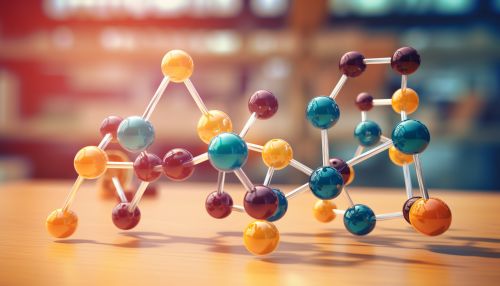Functional group
Introduction
A functional group in organic chemistry is a group of atoms within a molecule that is responsible for the characteristic chemical reactions of that molecule, regardless of the size of the molecule. The same functional group will undergo the same or similar chemical reaction(s) regardless of the size of the molecule it is a part of. This allows for systematic prediction of chemical reactions and behavior of chemical compounds and design of chemical syntheses.
Classification of Functional Groups
Functional groups can be classified into several broad categories based on their chemical properties and the types of reactions they undergo. These categories include hydrocarbons, alcohols, aldehydes, ketones, carboxylic acids, esters, amides, amines, and halogens.


Hydrocarbons
Hydrocarbons are organic compounds composed entirely of hydrogen and carbon atoms. They are the simplest type of organic compound and serve as the basis for the structure of more complex molecules. Hydrocarbons can be further divided into several subclasses, including alkanes, alkenes, alkynes, and aromatic hydrocarbons.
Alcohols
Alcohols are organic compounds that contain a hydroxyl (-OH) functional group. The presence of the hydroxyl group imparts certain characteristic properties to the compound, including increased polarity and the ability to form hydrogen bonds. Alcohols can be further classified as primary, secondary, or tertiary, depending on the number of carbon atoms attached to the carbon atom that bears the hydroxyl group.
Aldehydes and Ketones
Aldehydes and ketones are organic compounds that contain a carbonyl (C=O) functional group. In aldehydes, the carbonyl group is terminal (i.e., at the end of the carbon chain), while in ketones, the carbonyl group is internal (i.e., within the carbon chain). Aldehydes and ketones are often involved in reactions that involve the addition of nucleophiles to the carbonyl carbon.
Carboxylic Acids, Esters, and Amides
Carboxylic acids, esters, and amides are all types of organic compounds that contain a carbonyl group. In addition, carboxylic acids contain a hydroxyl group attached to the carbonyl carbon, esters contain an alkoxy group (R-O-) attached to the carbonyl carbon, and amides contain an amino group (NH2, NHR, or NR2) attached to the carbonyl carbon. These functional groups impart different chemical properties to the compounds, including differences in acidity, reactivity, and types of reactions they undergo.
Amines and Halogens
Amines are organic compounds that contain a nitrogen atom with a lone pair of electrons. Amines can be primary, secondary, or tertiary, depending on the number of carbon atoms attached to the nitrogen atom. Halogens, on the other hand, are elements in Group 17 of the periodic table and can form single bonds with carbon in organic compounds. The presence of a halogen atom in an organic compound can significantly affect the compound's reactivity and polarity.
Importance of Functional Groups in Organic Chemistry
Functional groups play a crucial role in organic chemistry. They determine the properties of organic compounds and the reactions they undergo. By understanding the properties of different functional groups, chemists can predict the behavior of organic compounds and design new compounds with desired properties.
